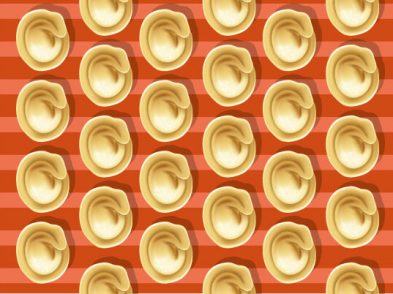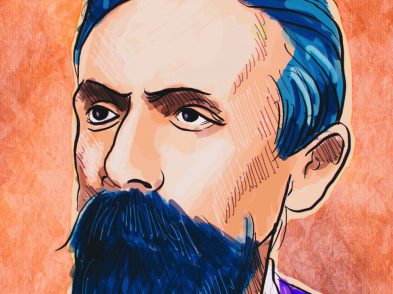Visitors of all ages, from all over the world, make their way to the basilica of San Lorenzo, heading for the chapel in the right transept. It contains the late-Roman sarcophagus of Danish doctor, anatomist, geologist, naturalist and bishop Nicholas Steno (in Danish, Niels Stensen), beatified by Pope John Paul II in 1988. They go there to pray, light a candle and, above all, to leave messages written on anything from a Post-it note to an old train ticket, odd piece of paper or even a tissue. They ask the saint to intercede for them for any one of a thousand reasons, as the notes piled on top of his tomb testify. Some, especially students, who are devoted to him, seek his help in passing an exam or writing a good paper. Others request assistance in meeting the person of their dreams or simply anything they desire.
Born in Copenhagen on January 11, 1638, Steno was the son of a wealthy Lutheran goldsmith. From 1656 to 1659, he studied medicine in his home city, then in Amsterdam (1660) and Leiden (1660 to 1664). Along with his native Danish, Steno was fluent in Latin, German, French and Italian, and could also speak Greek and Hebrew. After travelling throughout France, Austria and Hungary, in 1666, he became physician to Grand Duke Ferdinand II in Florence. The ruler invited Steno to live in the Palazzo Vecchio, in return for which he would put together for him a ‘cabinet of curiosities’—a room filled with natural wonders, so in vogue at the time.
At the Medici court, which was a place where distinguished artists and scientists mingled, Steno was asked to join the Accademia del Cimento, the first scientific association to use Galileo’s experimental method in Europe. Pope John Paul II commented that the greatest influence on Steno was, in fact, ‘contacts with Florentine circles in which the love for science harmoniously embraced religious faith and the practice of charity.’

Returning from a visit to Rome in June 1666 to meet Pope Alexander VII, Steno stopped in Livorno, where, after watching a Corpus Christi procession, he began seriously questioning his own beliefs. This led, in November 1667, to his conversion to Catholicism. Following a brief period in Denmark, he returned to his beloved Florence as tutor to Cosimo III de’ Medici son and heir, Ferdinando. Ordained a priest on April 14, 1675, he celebrated his first mass in the Santissima Annunziata church. With his significant pastoral duties, he slowed—but never abandoned—his scientific studies.
Following his investiture as a bishop in Rome in September 1677, Steno was sent to evangelise in Germany, where he died on December 5, 1686, in Schwerin. His death was probably hastened by his extreme approach to his vow of poverty. Often wearing old and inadequate clothing for the harsh climate there, he lived on only bread and beer four days a week and soon became seriously emaciated.
At the request of Cosimo III de’ Medici, his body was shipped to Florence and interred in San Lorenzo in 1687. In 1953, after a procession through the streets of the city, his grave was opened and his remains were reburied in the ancient sarcophagus—a gift from the Italian government—where they now rest.
In his short but prolific life, Steno, by all accounts a genial man, made important discoveries, many of which we just accept today as though they had always existed. Using empirical observation and experimentation in anatomical dissection, for instance, he discovered the salivary duct that still bears his name. His work helped to disprove that the heart was the centre of warmth, as Galen claimed, but simply a muscle that pumps blood. He also revealed that tears form in the eye.
Through the analysis of the teeth of a huge shark caught by two fishermen off the Livorno coast, Steno also found that fossils are remains of living organisms from previous geological eras. From his field trips to caves, quarries and mines in places like Carrara and the island of Elba, he deduced that rocks build up in strata. For these reasons he is considered today among the founding fathers of geology, palaeontology and crystallography.
Steno himself never doubted divine intervention in the origin of the world, and, unlike Galileo who, in 1616 and in 1633, was tried and convicted by the Roman Catholic Inquisition for his support of heliocentrism, Steno’s work was never called into question or discredited. However, his discoveries triggered a quiet revolution that eventually unseated the description of creation found in the book of Genesis as the accepted scientific authority for the source of creation and the dating of the earth.
Founded in 1964, the Stensen Foundation in Florence (viale Don Minzoni 25G) is a non-profit organization dedicated to and inspired by the life and studies of Nicolas Steno. Promoting cultural exchange, the foundation provides training programmes, organises conferences and seminars, screens high-quality films in its cinema and has a large library. For more information, see www.stensen.it.








